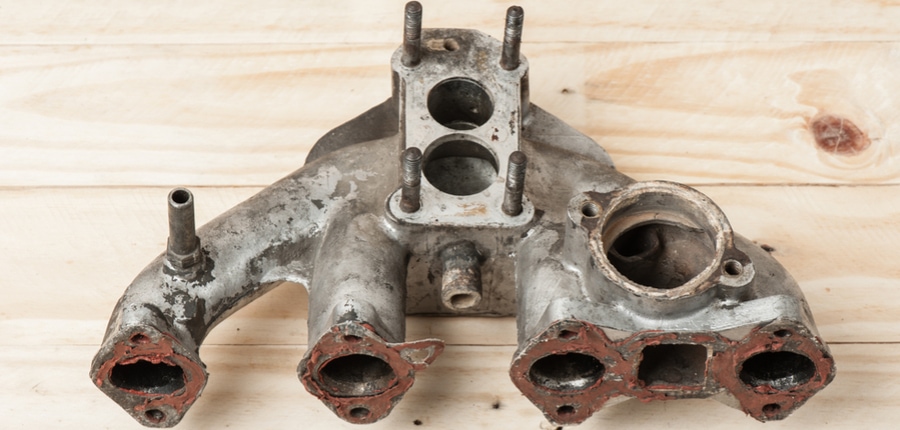An engine pulls air in through the air filter, flowing through the intake tube and then, the throttle body. From there, it goes into the intake manifold which splits it into separate streams for each cylinder in the cylinder head.
At the point where the intake manifold meets the cylinder head, there is a gasket to seal the junction. Depending on the exact engine design, this gasket may also seal coolant and oil passages. But in most cases, it only seals air.
Replacement involves unbolting the intake manifold from the cylinder head. On a four-cylinder engine, the job is simple. Except that, the position of the intake manifold on the side of a vertically oriented engine can make access difficult.
On a V-6 or V-8 engine the intake manifold sits on top in the valley between the cylinder heads. Access then is easier but the job itself is a little more complicated. If cooling passages are involved, the cooling system would have to be partially drained.
Replacement Cost of Intake Manifold Gasket
For some examples of the intake manifold replacement cost on some common vehicles, we will use $100 an hour as labor rate:
- For a 2006 Toyota Rav4 with a 2.4-liter engine, the labor will take around is 2.1 hours. A factory intake gasket set costs about $6, which makes the job about $216 in total.
- For a 2012 GMC Sierra 1500 with a 6.2-liter engine, the labor will take around 1.9 hours. A factory intake gasket set costs about $115, which makes the job about $305 in total.
- For a 2008 BMW 328i with a 3.0-liter engine, the labor will take around 2.4 hours. A Mahle intake gasket set costs about $24, which makes the job about $264 in total.
- For a 2004 Ford F-350 with a 6.0-liter diesel engine, the labor will take around 6.6 hours (involves removing several engine parts, including the turbo). A factory intake gasket price is about $16, which makes the job about $676 in total.
- For a 1994 Mazda MX6 with a 2.5-liter V-6 engine, the labor will take around 2.6 hours. A factory intake gasket set costs about $19 which makes the job about $279 in total.
Aftermarket intake gaskets are also readily available in most cases and are usually about the same in cost or trivial in cost difference overall; given that the main part of the job is labor. In a system that has coolant passages through the intake manifold, the job will include draining the coolant and then, a charge for about a gallon of coolant ($10 to $25 on average) would be added to the job.
What Goes Wrong With Intake Manifold Gaskets?
The intake system is under vacuum while the engine is running, so any leak from the intake manifold gasket will allow air to enter the system. The engine monitors the air as it flows through the intake tube, so any air that enters after that is un-monitored and causes problems with the fuel-air mixture.
An air leak at the intake gasket seal for one cylinder will cause a lean-running problem and sometimes, a misfire at that cylinder. Some 4-cylinder gaskets are made of thin fibrous material which can become very brittle and compressed over time and less effective as a seal in various conditions.
On a V-6 or a V-8, the intake manifold has to seal against two surfaces at opposing angles which is much more difficult. Temperature changes cause metals to expand and contract, so the seals are generally thicker and designed to accommodate more movement.
Intake gaskets often use rubber of some variety which can harden up with age and fail to seal against movement. There are also coolant and/oil passages built into this kind of intake manifold system, so signs of a gasket problem can also be oil or coolant leaks.

What Else Might Be Recommended?
On a four-cylinder engine, the job is fairly simple and doesn’t often involve any other things outside of what might be diagnostically related. An intake gasket can cause a lean-running condition, for instance, which can cause early wear on the spark plug electrode.
On a V-6 or V-8 where oil or coolant passages have to be opened up, a part of the job after the intake is removed is cleaning the cylinder head and block surfaces. It’s not always possible to do this without introducing debris or grit into the oil and coolant passages.
In that case, it might be recommended to drain the cooling system and do an oil change before reassembly to avoid unnecessary complications.

